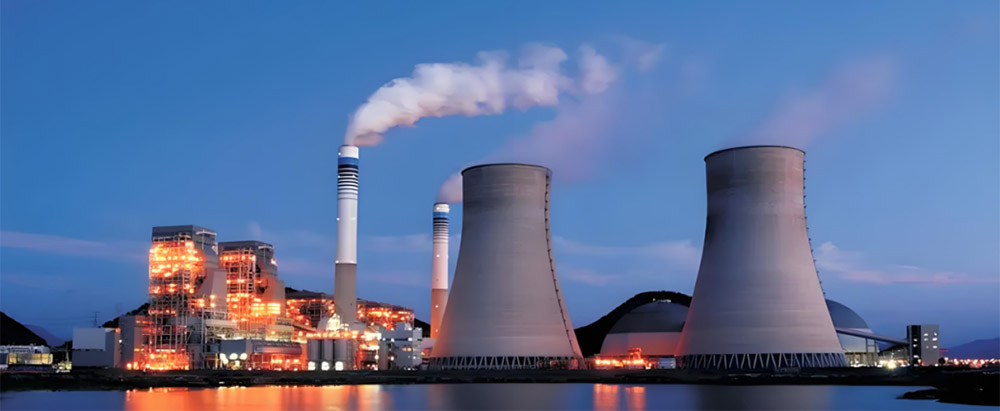The application of desulfurization and denitrification technology in the power industry mainly includes two aspects: flue gas desulfurization and flue gas denitrification.
Flue gas desulfurization(Flue Gas Desulfurization, FGD):
The main purpose is to reduce the sulfur dioxide (SO₂) content in flue gases.
Among traditional technologies, wet flue gas desulfurization (Wet-FGD) is a common method that utilizes the fixation of sulfur dioxide by lime or limestone to effectively reduce the sulfur dioxide content in flue gas and can remove more than 90% of sulfur dioxide. However, a major disadvantage of this method is the large-scale use of limestone or lime, which increases processing costs and brings economic pressure to enterprises. In addition, the subsequent treatment of desulfurization products such as calcium sulfate and calcium sulfite and secondary pollution are also issues that need to be addressed.

In coal-fired power plants, the flue gas produced by coal combustion contains a large amount of heat, sulfur dioxide, nitrogen oxides and other pollutants, and direct emissions will have a serious impact on the environment and human health. Therefore, it is necessary to carry out necessary treatment of the flue gas from coal-fired power plants.
Flue gas denitrification(Denitrification):
The main purpose is to reduce the nitrogen oxide (NOx) content in the flue gas.
Common denitrification technologies include selective catalytic reduction (SCR) and selective non-catalytic reduction (SNCR), which are used to remove nitrogen oxides from flue gas.
In summary, the application of desulfurization and denitrification technology in the power industry aims to reduce the emission of pollutants such as sulfur dioxide and nitrogen oxides generated in the process of coal-fired power generation, so as to protect the environment and human health.



